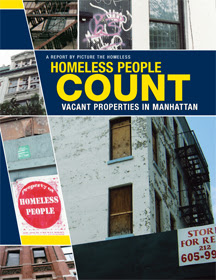Tuesday, May 29, 2007
Monday, May 21, 2007
The Challenge
Saturday, May 19, 2007
Friday, May 18, 2007
No Better than Ezra
You're on your own, unless you're among the educated elite:
I tend to think it's easier to not see the lack of mandatory paid vacation and holiday as much of a problem if you're a highly educated, white collar worker, and even easier if you're a stay-at-home, freelance writer. It will simply never be true for you that the minimum is your reality.
But that doesn't mean it's not true for others. According to the CEPR study (pdf), about a quarter of workers don't get any paid vacation or holidays. If you make less than $15 an hour, that number jumps to 31%. If you do get paid vacation, on average, you get 12 days of it a year. That's less than the statutory minimum in every advanced country save Japan and Canada, and I'd bet the average in both countries well outpaces the average here.
And it's not just vacation days. Nearly half of all private sector workers get no paid sick days. In the bottom quarter of US workers, 80% are deprived -- and this is exactly the group that can't afford to take an unpaid sick day. And so far as family values go, only one in three workers has paid sick days they can use to care for ill children.
Tuesday, May 15, 2007
Fallwell's Dead
There more.Navy veteran David Miller said that when he checked into the Veterans Affairs Medical Center in Iowa City, he didn’t realize he would get a hard sell for Christian fundamentalism along with treatment for his kidney stones.
Miller, 46, an Orthodox Jew, said he was repeatedly proselytized by hospital chaplains and staff in attempts to convert him to Christianity during three hospitalizations over the past two years.
He said he went hungry each time because the hospital wouldn’t serve him kosher food, and the staff refused to contact his rabbi, who could have brought him something to eat.
The Poverty Business
In recent years, a range of businesses have made financing more readily available to even the riskiest of borrowers. Greater access to credit has put cars, computers, credit cards, and even homes within reach for many more of the working poor. But this remaking of the marketplace for low-income consumers has a dark side: Innovative and zealous firms have lured unsophisticated shoppers by the hundreds of thousands into a thicket of debt from which many never emerge.Read the rest.
Federal Reserve data show that in relative terms, that debt is getting more expensive. In 1989 households earning $30,000 or less a year paid an average annual interest rate on auto loans that was 16.8% higher than what households earning more than $90,000 a year paid. By 2004 the discrepancy had soared to 56.1%. Roughly the same thing happened with mortgage loans: a leap from a 6.4% gap to one of 25.5%. "It's not only that the poor are paying more; the poor are paying a lot more," says Sheila C. Bair, chairman of the Federal Deposit Insurance Corp.

